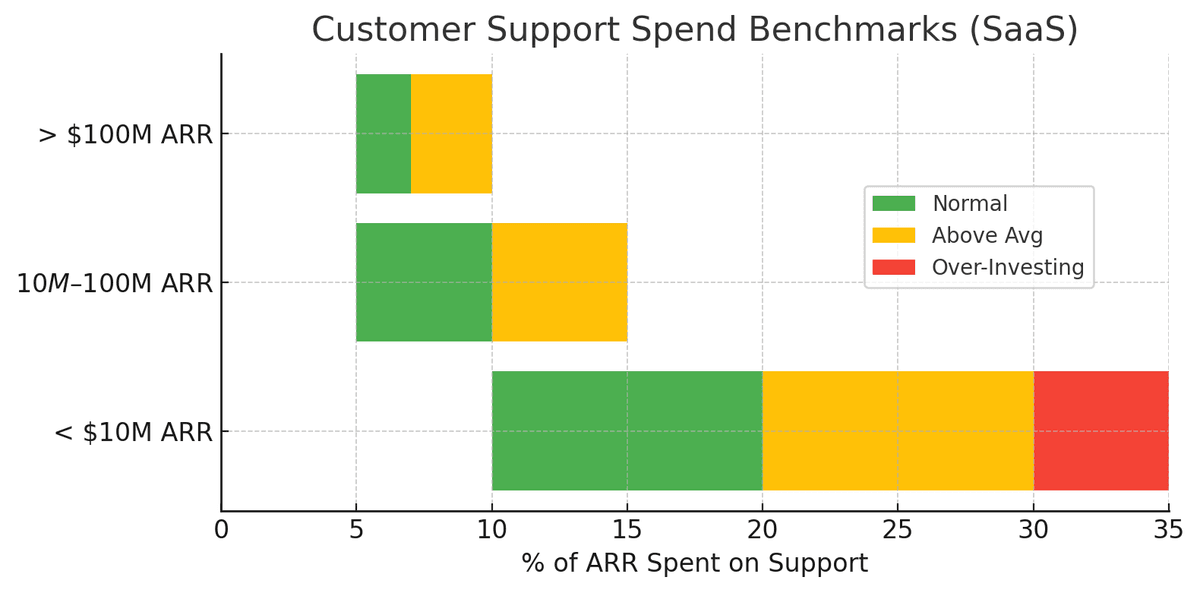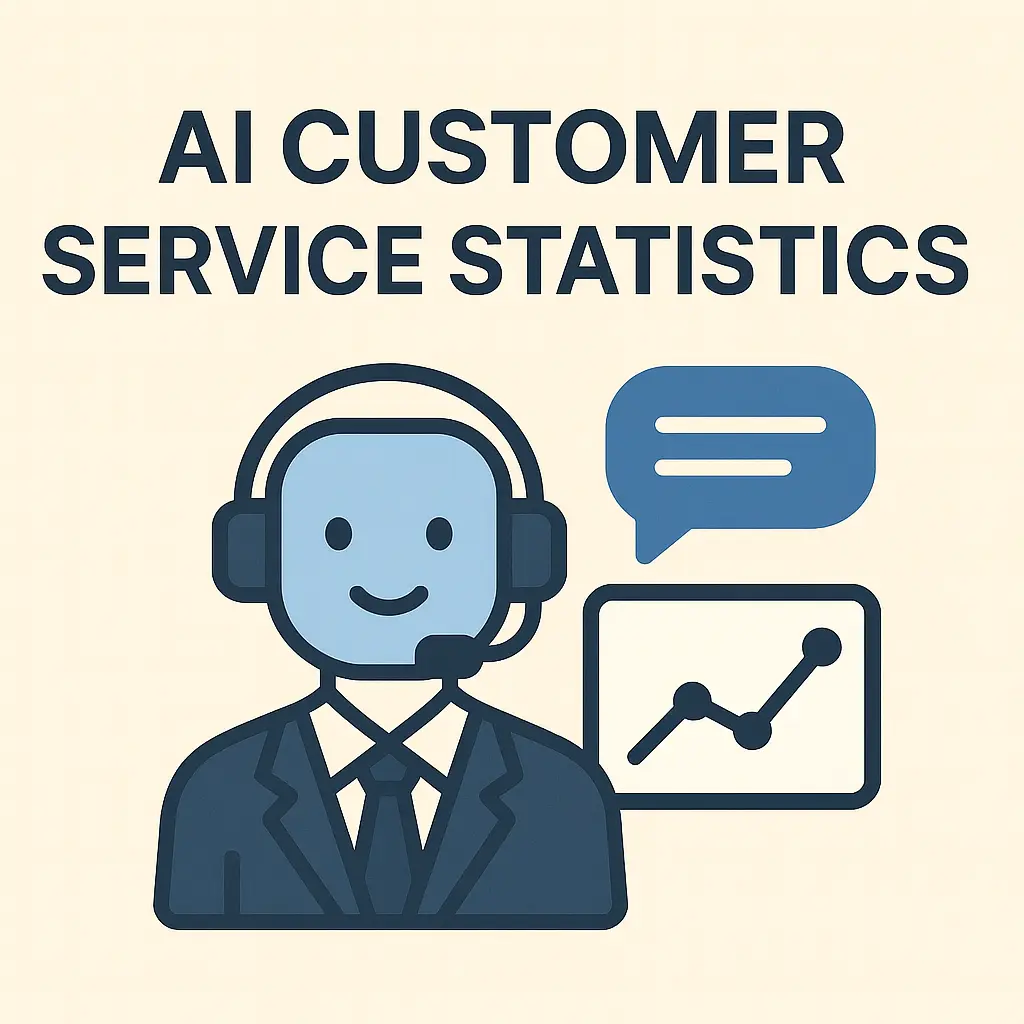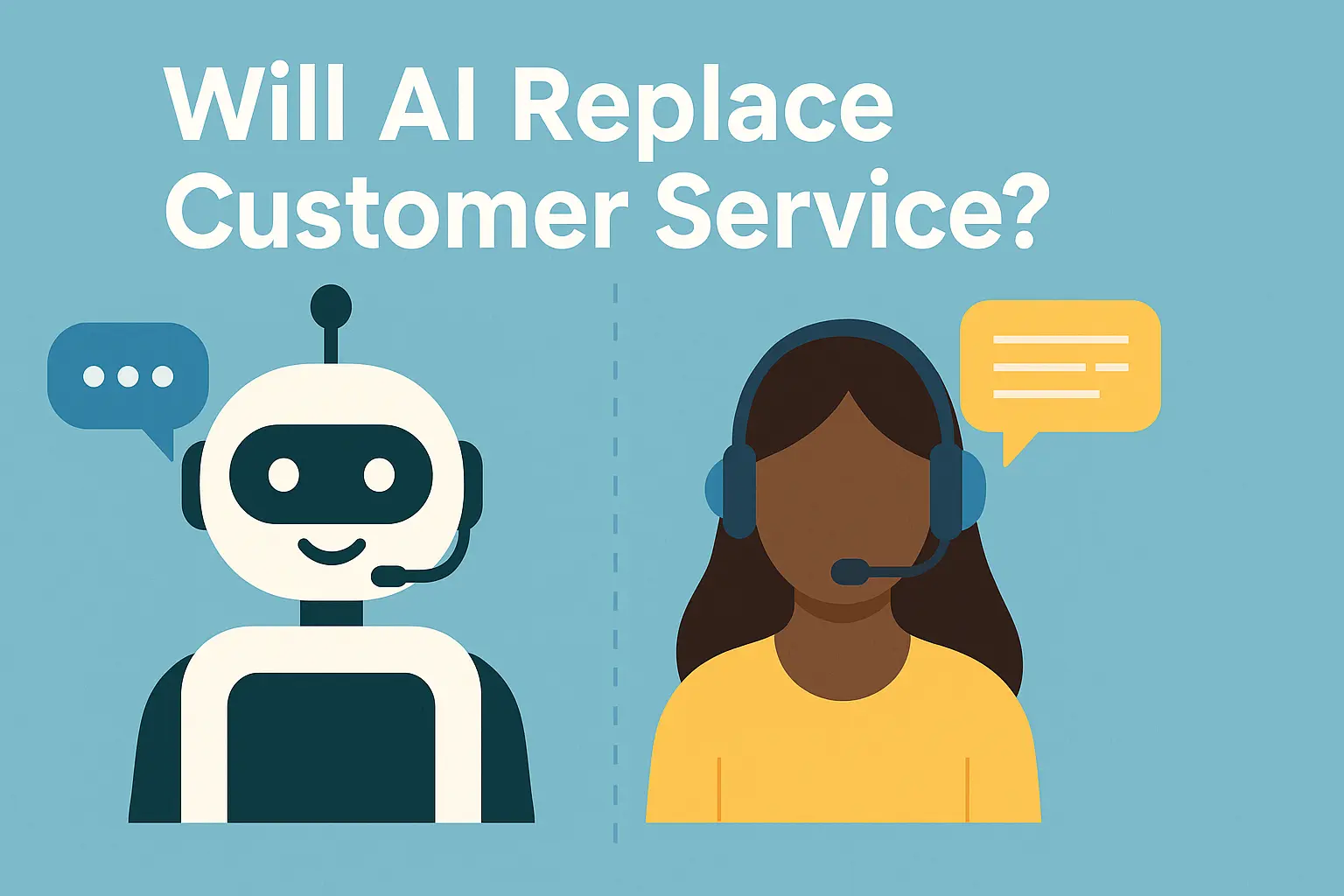Cost of Customer Support For SAAS (FREE Calculator included)
Discover the exact cost of customer support in the US, Asia, Latin America and Eastern Europe. Learn the 3 ways you can reduce this cost without compromising on quality.
Darius Talemwa
Author
Most SAAS business owners either think they know what they’re spending on support or have no clue where to even start.
In both cases, the real number is often a shock.
You hire a few reps. Pay them a salary. Maybe add a couple of tools like Zendesk or Intercom. And you’re done, right?
Not even close.
When you add it up, the average U.S. business pays around $77,000 a year for each in-house support rep. That’s salary, tools, and overhead combined.
Hire overseas? Sure — you can cut that to somewhere between $10,000 and $17,000 per rep depending on the region. But even then, the real number is often much higher once you factor in training time, lost productivity, and the sales you miss when customers leave after a bad experience.
And these hidden costs aren’t pocket change.
According to a 2018 Forbes study, poor customer service costs U.S. businesses around $75 billion annually.
More recently, a 2024 report by Qualtrics XM Institute estimates that poor customer experiences could put $3.7 trillion in global sales at risk each year.
That's a trillion... with a "T".
I spent hours digging through salary guides, benchmarking reports, and regional data to get the most accurate numbers possible. I’ll walk you through my thought process in each section — and you’re free to disagree with my approach. So in this guide, I’ll show you:
Exactly what customer support costs you.
The benchmarks you should be looking out for.
The Key Performance Indicators (KPI) that matter most.
Proven ways to slash those costs (without hurting quality).
And yes, how AI (done right) can make your support faster, cheaper, and better.
Let’s dive in.
The Actual Cost of Customer Support
When most people calculate their support costs, they stop at the easy stuff: salaries + software.
But the reality is that there is more to the bill than the obvious figures that standout.
Let’s break it down.
Direct Costs (The “Obvious” Ones)
These ones are easy to spot:
Salaries & benefits: Your reps’ base pay, health insurance, bonuses.
Tools & software: Help desk platforms, live chat systems, call center software, CRM integrations.
Looking at actual numbers…
Salaries
According to the U.S. Bureau of Labor Statistics, the mean annual wage for Customer Service Reps is around $43,520 (or $20.92/hour).
Glassdoor puts it higher — at about $55,845/year ($27/hour).
Let's land in the middle, conservatively: $50,000/year per rep.
Good. Now onto the tools.
Tools & Software
Even small teams need the basics: a help desk, live chat, a knowledge base.
A conservative estimate: $1,000/month → $12,000/year.
Overhead (Not so ‘Obvious’)
Overhead covers all the not so obvious costs that keep your support engine humming — training, onboarding, rent, internet, utilities, HR/admin support, etc.
In many businesses, overhead can be a substantial chunk of expenses.
Guidance from the U.S. Small Business Administration and Connecteam suggests that employers often multiply an employee’s salary by 1.25 to 1.4 to estimate the total cost of employment.
Let’s use a modest 1.3× multiplier.
$50,000 × 0.3 = $15,000 in overhead-related expenses
Total Cost:
Salaries: $50,000
Tools & Software: $12,000
Overhead: $15,000
Grand Total: $77,000/year per support rep
You might be thinking; “USA?? Why would I hire customer support in the US?” And you would be on to something.
Going overseas is a viable option.
So let us look at the numbers.
Outsourcing Costs (Asia, Europe, LATAM)
I took the approach of looking at major outsourcing regions — pulling from sources like the GrooveHQ Customer Support Salary Guide, Remofirst’s, and others
Here’s what the numbers look like on average;
Asia: $5,000 – $15,000/year
Average: ~$10,000/year
This region has some of the lowest support salaries globally. Countries like India or the Philippines often average closer to $5K/year, while higher-cost hubs like Hong Kong or Taiwan can push toward the upper end.
Eastern Europe: $10,500 – $30,000/year
Average: ~$17,000/year
Poland sits around $16.9K/year, Bulgaria closer to $10.5K, with senior roles reaching $30K. This makes it a sweet spot for balancing cost and skill level.
Latin America: $12,000 – $30,000/year
Average: ~$15,000/year
Local averages in some countries can dip under $10K, but remote positions from U.S. or global companies often land in the mid-teens. Top roles or U.S.-paid remote contracts can go much higher.
But Beware…
Cost isn’t everything. Outsourcing can save you a bundle, but:
Poor training = poor Customer experience.
Time zone mismatches = delays
Lack of fluency in English can also be a hurdle.
The Hidden Growth Loss (Invisible ones)
This is the cost nobody puts in their spreadsheet — but it’s the one that can hurt the most.
It’s the sales you never make because a frustrated customer left after one bad interaction. It’s the churn in your SaaS business because your support team didn’t have the right answers. It’s the growth you could have had… if your customer care was actually world-class.
Here’s the trap: you look at your spreadsheet and think you’re “saving” money by hiring cheaper reps or cutting corners on training.
But those “savings” get wiped out — and then some — when you factor in the customers you lose, the negative reviews that stick around for years, and the bad word-of-mouth you can’t measure but can feel in your bottom line.
Slow replies, vague answers, and agents who don’t fully understand your business don’t just cause minor annoyances.
They chip away at trust, hurt your brand, and quietly drain your revenue over time.
And unlike software costs or salaries, this loss doesn’t show up in your budget… until it’s too late.
Cost Benchmarks Based on the Size of Your Company.
Based on the figures above, you might have a ballpark idea of what your customer support costs.
But how do you know if that cost is too high, too low, or right on the money?
To answer that, I dug into spending benchmarks from sources like the SaaS Capital 2025 Spending Benchmarks report and Gainsight’s Customer Success Cost Benchmarks, plus others.
And to keep it simple. I focused on SAAS companies and their Annual Recurring Revenue (ARR)
Here’s the simple breakdown by ARR:

Small Companies (Under $10M ARR): ~10–20% of ARR on support is totally normal. Some early-stage companies go even higher (over 30%) because they “over-invest” in customer success to keep every customer happy. Many cluster around the 10–15% mark.
Mid-Sized Companies ($10M–$100M ARR): You’ll usually see 5–10% of ARR going to support. Over half of companies in this range spend less than 10%, and about a third manage to keep it under 5%. Still, anything up to 15% is considered fine at this stage.
Large Companies (Over $100M ARR): Economies of scale kick in. Support spend typically drops to 5–7% of ARR, with many keeping it under 5%. Anything up to 10% is still in the “normal” zone.
Cost of Customer Support Calculator for SAAS
To get an idea of what the cost of customer support could be for your business, I created a customer support cost calculator.
Just input the number of sales agents you are looking at, input the region and you will get your cost.
The benchmarks are embedded to show you if you are within the green zone of your category.
You are also free to edit the preset figures (such as overhead, salaries per region etc) as this data is constantly changing.
Cost of Customer Support — Calculator
Estimate annual support costs in USD and see where you land vs. SaaS benchmarks.
Help desk, live chat, knowledge base, etc.
1.3 means total employment cost is salaries x 1.3.
Annual Breakdown
- Base Salaries (3 x $50,000)$150,000
- Overhead (multiplier 1.30)$45,000
- Tools and Software ($1,000 x 12)$12,000
- Total Annual Support Cost$207,000
Benchmarks vs. ARR
Bands by ARR: < $10M - 10-20% normal (20-30% above); $10-100M - 5-10% normal (10-15% above); > $100M - 5-7% normal (7-10% above).
Formula: Total = (Reps x Salary) + Overhead + (Tools/mo x 12).
The 3 Most Important KPIs to Watch
If you want to cut support costs without cutting corners, you need to track the right numbers.
Here are three KPIs that actually move the needle:
1. First Contact Resolution (FCR)
This one’s big. It tells you how many customer issues get solved the first time around. No back-and-forth. No bouncing between agents. No dragging out the issue. Just done.
Why it matters:
Every follow-up = more time, more cost, and a less happy customer.
Higher FCR = happier users and fewer tickets in the queue.
2. Average Handle Time (AHT)
This tracks how long an interaction takes — from hello to goodbye (including hold and wrap-up).
It’s a classic efficiency measure.
Lower AHT (without killing quality) means your reps are working smarter, not harder. That’s savings you can feel.
3. Cost Per Ticket
This one keeps your whole team honest.
It shows exactly how much you’re spending, on average, to resolve each support request.
If your cost per ticket is ballooning, it’s a sign something upstream — like training, self-service, or ticket volume — needs fixing.
How to Reduce Customer Support Costs (Without Hurting Quality)
Cutting costs without cutting corners? Totally doable — if you focus on what actually drives volume (and wasted effort).
Here are 3 battle-tested plays that save money and improve the customer experience at the same time.
1. Make Self-Service the First Stop (and Actually Measure It)
Let’s be honest.
A lot of companies think they have a help center. But what they really have is a dusty FAQ page with 14 outdated articles and a search bar that hasn’t returned a relevant result since 2018.
If that’s you — you’re not reducing costs. You’re increasing them.
Because every ticket that could’ve been solved by an article is now eating up rep time.
The fix? Treat your help center like a product. Write useful content. Make it searchable. And then (this part is critical) measure what’s working and what’s not.
Here’s how to do it:
Track your self-service rate. This is the % of users who find an article and don’t end up contacting support. The higher, the better.
Look at “view-to-ticket” ratios. If users are reading an article and still submitting a ticket right after, that article isn’t doing its job.
Fix the top offenders first. Start with your most-viewed or most-bounced articles. Improve formatting, add images or gifs, and rewrite anything that sounds like legalese.
💡 Pro tip: Link to your best self-help articles directly inside your chat widget or contact forms. Help people before they hit send.
2. Kill Repeat Contacts at the Root (Not Just Faster Replies)
You don’t need more agents. You need fewer tickets.
And one of the biggest hidden drains on your support team? Repeat contacts.
The same customer reaching out about the same issue because it wasn’t fully resolved… or wasn’t explained clearly the first time.
This is like trying to empty a bathtub with a spoon while the faucet is still running. You’ll never catch up.
Here’s how to fix that:
Tag repeat tickets. If a customer follows up within a few days about the same issue, flag it. Over time, you’ll start to see patterns.
Identify the root causes. Are certain products triggering more repeat contacts? Are certain agents rushing responses? Or is your process unclear?
Fix the upstream problem. Whether it’s improving an onboarding flow, rewriting a confusing email, or adding automation to a broken step — stopping the problem before it starts is where the savings are.
💡 Fixing just 2 or 3 high-frequency repeat issues can reduce ticket volume by 20% or more. That’s thousands of dollars saved — without laying off a single rep.
3. Invest in Knowledge for Agents, Not Just Customers
Everyone loves talking about the customer-facing knowledge base. But what about your internal one?
Because here’s what happens way too often…
A customer asks something tricky. The rep has no idea where to look. They ping 3 teammates, scroll through Slack, dig into old tickets, and maybe — maybe — find an answer.
That’s 12 minutes gone. And 2 more customers waiting in queue.
The solution? Build a centralized, trusted internal knowledge base for your agents.
Think:
Troubleshooting steps
Policy explanations
Edge case scenarios
Refund rules
Login recovery flows
Shipping policies by country
Here’s how to make it work:
One single source of truth. Don’t spread info across Slack, Notion, Google Drive, and Dropbox. Pick one system and stick to it.
Make it fast to search. If agents can’t find it in <5 seconds, it doesn’t count.
Assign ownership. Every article should have a clear “owner” who keeps it up to date.
💡 Bonus tip: Integrate your internal KB directly into your help desk. That way, agents can search while replying — without switching tabs.
A Case for AI Agents (Why SiteChatify Wins on Cost & Value)
By now, the math is clear: customer support is expensive — whether you’re hiring in-house or outsourcing abroad.
Even if you pay just $500–$1,000/month for offshore agents, you’re still spending five to ten times more than an AI-driven solution. And that doesn’t include the extra costs that quietly add up over time:
Training new hires
Maintaining tools and software
Managing burnout and turnover
With SiteChatify, you can put a trained AI agent on your site for as little as $25/month — even the most advanced plan is $70/month.
That’s a fraction of the cost of a traditional support setup, and it works 24/7 without breaks, shift changes, or onboarding delays.
For most businesses, the question isn’t whether to replace human support entirely.
It’s about letting AI handle the repetitive, time-consuming questions so your human team can focus on complex issues and high-value interactions.
In other words, it’s a way to scale support without scaling costs.
Ready to Build Your AI Chatbot?
Create a smart ai chatbot for your website in just a few minutes. No coding required!
Smart AI Responses
Powered by advanced AI technology
Quick Setup
Get started in under 5 minutes
Free to Start
No credit card required
About the Author
Darius Talemwa
Author

